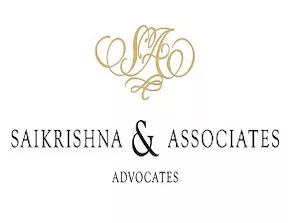- The Delhi High Court Rules Governing Patent Suits, 2022 ('the Rules'), which were notified on 24th February 2022, have now been in effect for more than a year. This period allows us to assess its impact, appreciate the positive changes introduced by it, while also acknowledging areas that may still need improvements. In general, the Rules have successfully provided a clear roadmap for achieving "simpler, effective, and efficient adjudication", which is what it set out to do.
- However, it is important to note that while the Rules are meant to complement, not supersede, the provisions of the Commercial Courts Act, 2015, and the Indian Evidence Act, 1872, there may still be some conflicts between these Rules that need further clarification. Some of the undeniable benefits realised on account of the Rules are as follows:
The Hits:
(i) Cutting down on delay: The Rules have effectively addressed one of the core issues faced in patent litigations i.e. considerable delays. The following measures are significant in this regard:
- Pleadings and documents: By outlining specific requirements for the pleadings and documents to be filed by both parties (Rule 3 & 4), the court now has a checklist to ensure cases are well-prepared before proceeding to adjudicate upon the same. A strict adherence to these rules should result early and complete disclosures being made by parties and therefore quicker and more effective determination and adjudication of issues.
- Case Management: The Rules provide a structured approach through three case management hearings (Rules 8, 9 & 10). This empowers the court to decide the order in which issues are resolved, based on the case's unique circumstances. For example, if the court decided the issue of invalidity first and the patent fails on this count, then a trial on the other issues is completely unnecessary, thereby saving a lot of time and resources.
- Video conferencing and Transcription of Evidence: The Rules allow the court to order evidence to be recorded via video conferencing, even without an application to this effect being moved by a party. Rule 9(ii) also provides for the transcription of evidence, with the consent of parties. Benefits of this technology has already been seen in the case of Communication Components Antenna Inc. v. Rosenberger Hochfrequenztechnik GMBH & Co, CS(COMM) 653/2019 case, where the entire recordal of evidence had been concluded in just 2 days.
- Summary adjudication: While Order XIIIA of CPC, 1908 allows for Summary Judgment, Rule 16 specifies additional circumstances for this in the context of patent litigation, namely where the remaining term of the patent is 5 years or less, if validity of the patent is undisputed, or certificate of validity has been previously issued or upheld by IPAB, High Court or the Supreme Court; or if the Defendant is a repeated infringer of the same or related Patent.
(ii) Securing confidential information: The Rules enable the formation of "Confidentiality Clubs" to safeguard sensitive documents/information submitted by parties from non-parties to the suit. Rule 11 further strike a balance between protecting confidentiality and maintaining transparency by outlining procedures to be followed by parties while requesting redaction of confidential data.
(iii) Mediation/Early Neutral Evaluation: The Rules also facilitate Mediation and Early Neutral Evaluation (ENE) for swift resolution of patent disputes. Rules also allow for appointment of technically qualified Mediators with expertise in science, economics, and law, or have the assistance of technical experts. Rule 12 further specify that Mediation and ENE proceed concurrently with legal proceedings, so that there is no unnecessary delay in the adjudication of these suits.
- While the Rules have certainly made many commendable advances, experience has also revealed certain blind spots that need to be remedied. Some of the issues are as follows:
The Misses:
(i) Stricter Implementation of the Rules:
- While the Rules prescribe the protocol to be followed in patent litigations, it does not specify the penalties to be imposed, in case such protocols are not complied with. For example when the Rules clearly prescribe the nature of information and documents to be submitted, parties should not be allowed to file documents at a later stage, unless strong reasons for the delay is provided.
- The provision allowing for inclusion of independent experts during hearings or mediation, as allowed by the Rules, is rarely implemented.
(ii) Reconsideration of certain protocols:
- While the Rules require submission of claim construction briefs, invalidity briefs and infringement briefs, this requirement is only sought after the stage of admission/denial as per Rule 7(v). If on the contrary, this requirement is enforced at the very stage of submission of pleadings, then there is a greater chance of narrowing down the controversy and ensuring that parties do not improve upon the scope of their claims and defences.
- Also by stating under Rule 7(vii) that such briefs will not be construed as pleadings, there is a concern that this would water down the purpose and significance of such briefs.
- While Rule 6 allows parties to do advance service over emails, the Rules ought to have clarified that in cases where parties have been corresponding prior to the institution of the suit, then the service of the suit should be made on the very same email IDs. Since, from experience it has been seen, especially, in the case where companies have multiple branch offices, that services are sometimes being effected on customer care email IDs of such parties, which at times becomes very difficult to track and be constructively aware of.
- Compulsory mediation without the consent of parties as stated in Rule 12, may result in a pointless exercise and in effect be antithetical to the very purpose of mediation. Moreover, while mediation proceedings under the Rules would run parallelly to Court proceedings, this may also prove to be counter-productive since observations, if any, made by the Court, may dictate a party's conduct during the course of mediation. It may therefore be more fruitful to consider sending parties to mediation only after completion of pleadings and prior to commencement of interim hearings on the merits of the matter, so that parties can make a considered decision pursuant to weighing all the pros and cons.
(iii) Reconsideration of certain timelines: While overall delay caused in litigation ought to be reduced, there are certain areas in which the timeline prescribed by the law ought to be revised, particularly, in the case of Replication. As per the Delhi High Court Rules, 2018, the time to file Replication is 30 days, extendable by 15 days. However, in patent litigation, it is often seen that when the Defendant introduces, by its Written Statement, arguments of invalidity of patents, the response to them, by way of Replication, is akin to drafting a Written Statement. This is further so in case of Standard Essential Patent matters where the Defendant also introduces arguments in respect of non-essentiality of patents. Thus, where Replication becomes a comprehensive response to highly technical arguments, 45 days for filing Replication becomes an extremely tight deadline which requires to be extended. However, the Rules do not provide for such extension.
- In conclusion, while the Rules have been effective in a great measure, the above stated issues could be resolved through court decisions, wherein the interests of litigants and expedient judicial adjudication can both be achieved.
To view original article link/click here
The content of this article is intended to provide a general guide to the subject matter. Specialist advice should be sought about your specific circumstances.



